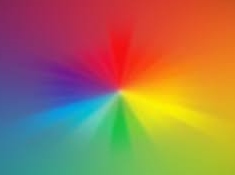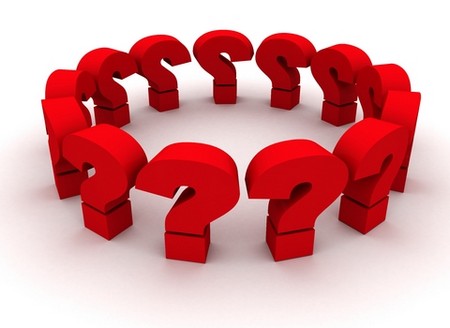
Colour rules your web site!
Leonard Lauder, chairman emeritus of Estée Lauder, claims you can judge the economic climate by the sale of red lipstick. The premise is that women will treat themselves to a lipstick instead of buying something more expensive during an economic downturn.
The colours used on your web site may well make or break your enterprise and don’t tell me it uses lots of puce because that is your favourite colour. Your business may be at risk. But perhaps the best way to start this article is to reprise some underlying factors.
Understandably, elements such as personal preference, experiences, upbringing, cultural differences, context, gender and so on, often muddy the effect individual colours have on us. The idea that colours such as yellow or purple are able to invoke some sort of hyper-specific emotion is about as accurate as your standard Tarot card reading was an authoritative assertion some years ago. Not so any longer
The question of colours and their emotive powers has been a debate of long standing. Over time, marketers in a variety of spheres have drawn their own conclusions but a number of recent papers from Oxford and Stamford universities have prompted me to reprise this topic. Unsurprisingly you can do a degree in the psychology of colour.
In the past, the influence of colour on our behaviour has mostly been theoretical. But now we are starting to see significant empirical data being gathered and analysed that then provides us with a much wider base on which to base our concepts and indeed decisions on their use.
First, let’s address branding, which is one of the most important issues relating to colour perception. In one study, researchers found that up to 90 per cent of snap judgments made about some products can be based on colour alone. Another study shows that the relationship between brands and colour hinges on the perceived appropriateness of the colour being used for the particular brand. A case of does the colour “fit” what is being sold.
A further study also confirms that purchasing intent is greatly affected by colours due to the impact they have on how a brand is perceived. This means that colours influence how consumers view the “personality” of the brand in question. After all, who would want to buy a Harley Davidson motorcycle if they didn’t get the feeling that Harleys were rugged and cool? I cannot imagine a pretty pink Harley, can you? Or who would want to stay at a resort rendered in a drab monochrome?
So which colours matter or invite or even incite action? In brief, consensus of the simplified basics is as follows:
– Yellow: optimistic and youth. Used in window displays to catch attention.
– Red: energy. Used on Sales.
– Blue: trust and safety. Used for, but not limited to, banks and companies.
– Green: health, environment. Used to show calm.
– Orange: it’s an aggressive colour used to catch attention.
– Pink: romantic and feminine. Used for woman and girls.
– Black: strong and elegant colour used for luxury products.
– White: pure, perfection. innocence, wholeness and completion.
– Silver : feminine, fluid, emotional, sensitive and mysterious.
– Gold : success, triumph, prosperity, luxury, prestige and sophistication.
This article is far too short to allow discussion of tints and shades.
It is also important to know that every colour will attract different kinds of consumers. Those who are impulsive are attracted by red, black and blue; the budget conscious are attracted by dark blue and a bluish green; the traditionalism aware consumers are attracted by pink or blue. Gender, however, has a solid skewing effect.
According to one study women process information in retail in much more depth than their male counterparts. In a series of experiments conducted researchers discovered that when men saw an advertisement with the prices written in red, they believed that that retailer was offering greater price savings than those printed in black. Not only that, they felt very positive about making a purchase too.
For women, on the other hand, the red had no such effect. To the contrary, it made them suspicious. If you show a woman an advertisement in red, the woman is sceptical of what is really going on and thinks she has to be extra vigilant. ‘Am I being tricked?’ she asks herself, whereas men are less practised shoppers and see the red as a useful shortcut. Check out your super store shelf price tags to draw your own conclusions.
A somewhat curious aside is that people tend to prefer colours that duplicate the colours relating to their climate and babies cry more in a yellow room. This may well be a hint for your next refurbishment project.
This topic is huge yet much of it is also self evident. Have you ever seen lilac power tools or yellow coloured advertisement for butchers? These questions apply equally to the colour content of your web site and whether it sells rather than just looking “pretty” – perhaps only to you. Similarly you should be aware of the gender or demographic you are pitching to. Then ask yourself why Apple has a white web site and store? And as a final pointer, just consider the opening paragraph of this article.
Can you afford to have an everlasting web design and ignore the financial confidence of your market?
We live in a complex world and expert guidance is required for the visual content of your web site as well as powerful text and clever code structures. Just be aware of these traps and make sure you have a designer capable of correctly applying this chunk of psychology.
Lego provides a perfect example of the psychology with the powerful use of colours in their ubiquitous blocks. As a broad generalisation blue, turquoise, green, red, yellow, black, white, grey and silver are colours that are the most suitable for use in a business marketing to both males and females. As always, caution and comprehension of all interacting permutation is still needed.
And Freud has not even entered the discussion yet nor have we looked at the fruit and vegetable section of a supermarket!
So which colour should rule your business?





